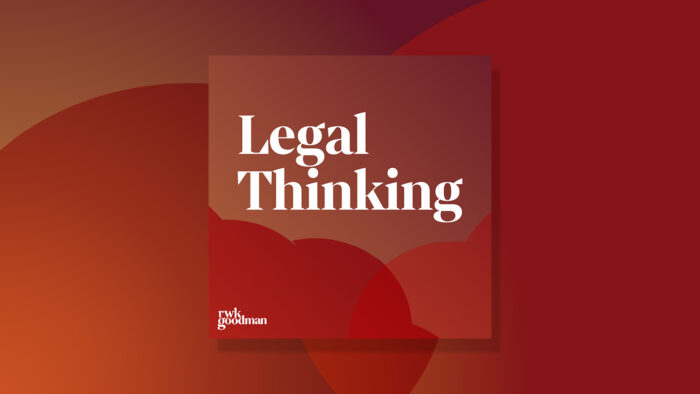The E in ESG – what the health & social care sector needs to know about external land and energy.
This podcast transcript has been edited in places for readability. You can also listen to our podcast on your podcast platform of choice - find it here >
In this episode we're continuing on the topic of ESG in the care sector and we're talking to Rob Walton about external land and energy - the E part of ESG. So, all the different options that care providers might have in relation to ESG, such as adding photovoltaic panels on their land or energy contracts and more.
Tell us a bit about the E in ESG and how does this apply to care providers?
Yeah. So this is environmental, in many ways this is the best known of the three pillars of ESG. In simple terms most people would associate with green initiatives, renewable energy, carbon zero, etc. but it is much more than that, actually given it’s such a big area, we’ve decided to do two podcasts on this subject and this one is going to look at external aspects such as land and energy usage. The next podcast looks inside of buildings and technology.
So care providers specifically, what do they need to bear in mind and does this kind of change for the type of care they're providing at all, like children's services, for example?
Yeah, I think the first thing to say is it’s got to be relevant for your particular business.
If you say you have two or three care homes, your policy is going to look very different to providers with 40 plus homes, for example, and also look very different to a policy from someone who isn’t in the care industry.
If you’ve got a special school, then your considerations and restrictions are different to, say, a supported living provider. If your properties are held under leases, then again it’s different if you don’t own your property as a freeholder, so your policy always has to reflect your business and its focus and it shouldn’t just be a cookie cutter from another business that maybe you’ve seen on the internet and decided to go and put a policy that way.
Why is energy efficiency important?
So in terms of a large outlook, you would say that energy efficiency reduces carbon, the carbon you use, which is better for the environment. It helps combat climate change and at that point you can also look at things like public perception, customer perception and also third-party organizations such as funders. However, in the main, simply speaking, for a business a more energy efficient building in business reduces cost as this is the easiest thing to initially measure. Depending on your ESG journey, whatever point you’re at, different one of those things I’ve mentioned maybe a priority, but at the start I think cost is always going to be a driver, especially when you look at the excessive energy bills at the moment.
Where would a care provider start on this journey to environmental part of ESG?
When we’re looking at our buildings and sites, the first step would be to do something called an estate review, which would also encompass a condition report of the buildings.
So if you have a number of sites, this is something you should really be doing on a yearly basis, though some parts might not always need to be updated like example your title. So in short an estate review would probably encompass the following. So number one you would review your legal title and lease if you have one to clarify what you own and what the rights and restrictions and what you can do and number two is if you have an EPC, which is an energy condition report, this will give you greater efficiency and it also lists basic measures that can be taken. You may not have one of them. You may have to go and get one. You usually only have one if you recently acquired a property or you have a lease for example and next you’d have a condition report of the buildings highlighting red and amber issues i.e. things that need urgent attention now, say your roof is falling in or things that ideally need to be done at some point during the year and lastly, you’d have a report of your current utility suppliers, your rates, when your contract expires, key terms of that as well. So everything is at hand.
What are some of the fundamentals for reducing energy costs?
Yeah this is threefold really. So number one you’ve got energy contracts and number two would probably be alternative energy supply and lastly would be retrofitting of existing buildings. I’d briefly mention you’ve obviously got new building construction but I’ll leave that for now because that’s quite a big subject.
So you've mentioned reducing energy costs and I guess part of that is securing the best deal possible and maybe getting something like a green tariff. Can you explain how they might get one of those and what they are?
Yeah, this comes down to a few methods. So first of all, it’s important you have accurate figures as to your energy usage in order to compare like for like. Different parts of the sector can take advantage of different services. But everyone can use, say a specialist energy broker or even if you’re doing it yourself, your price comparison websites.
If you’re using an energy broker, it’s important to utilise one that works in your sector so they have more specialist knowledge. Often from these people you get a one off comparison. That’s not always very useful because what you want to look at is long term trends so you can go and see what would be the right thing for you. For example, do you want to go a fixed or variable contract or where you get your energy from and as we briefly mentioned, green tariffs, which I’ll talk about in a bit.
So in terms of specialist services that people can utilise, Care England do a bulk energy tender, special schools for example large and multi-academy Trusts can take advantage of bulk buying and also you can buy through the Local Authority for schools or public sector buying authority and there’s also a Government funded BRE energy efficiency tool which is very useful. Now coming on to green tariffs. Basically these are special rates set by regulated utilities for customers who want to procure renewable energy. So the customers access renewable energy directly from their utility through the existing grid and they pay for it using their existing billing systems. So the purpose of these is to help support the development of renewable resources. But for a provider it’s very useful if you want to make a commitment to ensuring you only use energy from renewable sources, but you cannot generate it on site yourself.
What are the options for renewable energy?
So in terms of generation on site obviously I’d mentioned green tariffs and that’s simply where you go and access it directly for the energy provider. But if you’re doing it on site you’ve got wind or solar.
Now wind is going to be difficult unless you use micro turbines and they’re not enormously efficient unless you have a gigantic site and you want to have a huge wind turbine and therefore really you’re looking at solar. Now the options there are the traditional routes of purchasing panels through a PV panel supplier and fitter or the alternative option is to enter into a joint agreement with a provider itself or a rooftop lease. This is where you get free energy in exchange for the excess being sold to the grid by the provider. Now you usually get this where there is a very large area for the panels. It’s common on tops of school sports centres for example. So you really need to look at your site and the size of your buildings and then maybe you can be in contact with some local solar provider companies who maybe have their solar farms, because often they have initiatives that they want to go and engage and go and create these facilities.
The other thing to briefly mention is air source heat pumps. These are exceptionally reliant having a very efficient property. So to be honest it’s only really useful for new builds. So that’s where you consider them and one interesting development is in Bristol there’s water source heat pumps and there’s an exchange actually right next to our Bristol office that powers a number of local businesses via the River Avon and I know that’s something that is being expanded over Bristol at the moment, so it may be something to look into in your local area if you’re in a large city for example.
What's retrofitting in relation to all this?
These are measures taken to existing buildings to improve their energy efficiency. So your starting point there is going to be your windows and roofs. So your windows through double and triple glazing and an insulation for your roof because that’s the main places that you lose energy. There’s also solar glass, which is a new development which can be more efficient than triple glazing. Your EPC will give you an energy efficiency rating, though it’s also possible to employ specialist companies to carry out energy assessment to see what produce the best financial savings for your financial output.
When we’re looking at renewable energy, for example, putting in PV panels, you can take quite a long time to get the money back and of course, they only function fully when the sun is shining. So that’s not always the greatest initial financial investment.
And where does battery storage fit in?
Putting aside where you have a rooftop solar lease with a third party, if you’ve ever owned panels having battery storage can make a dramatic difference as now the energy can be stored, meaning you get regular power all year round and then you can also sell some of it back to the grid. The initial financial costs of that can be quite high, especially given the size of the buildings within the care industry. So it’s one of those things where we’re waiting for technology to catch up, to go and reduce costs really. But ultimately if you’ve got solar panels, that is the way to go and make them work efficiently long term.
What about diversifying the use of your property, perhaps through solar panels? What options are there and how does that help with the environmental aspects of ESG?
So this is applicable, let’s say you had a really large site. Let’s say you have quite a few acres. You have fields or woodland which you sometimes get on specialist schools, sometimes you get very large care homes with that and maybe you’re just not using all of that area. That gives you a number of options to diversify usage.
So let’s put aside your normal sales apart for residential development and you have the possibility of hiring land for forest schools or glamping or third party usage depending on the location. However, what’s sort of interesting in the environmental side is there’s now natural capital markets where you can obtain an income from environmental usage. This is things like biodiversity, net gain, nutrient neutrality as well as the Government carbon markets which are woodland and peat at the moment, as well as the private carbon markets where you essentially, companies will go and offset their own carbon emissions through what you do on your site. We’re going to be doing a separate podcast for that in the future, not linked to ESG, but something that covers all the different sectors that we work in.
How would one measure the E in ESG?
So as a starting point this is going to be your energy usage and energy bills. Lots of people now have got smart meters and tools and you can see your energy output in real time.
So actually it’s very easy to monitor to see exactly what you’re using and then see how much it costs. As I said previously, your policy should always be system based not goal based. Rather than saying I want to do a 10% reduction or I want to be carbon neutral by 2030, it’s much better to have systems in place that can be measured and reported on regularly to see how they’re performing, and then you can go and adjust them.
At that point, obviously your journey is going to continue rather than saying, well, I’ve hit this point, that’s great. What do we go and do next? If you’re putting in something that consistently goes and can be monitored and be changed, then you have probably accurate predictors if you’re moving towards where you want to be.
So what should providers be focusing on first if they want to reduce bills?
The first steps, aside from a policy with an adequate measuring facility and established systems, we look at steps which require minimal financial outlay.
So this is going to be reviewing your energy contracts. Building assessment monitoring where energy is lost in the building. We’re going to talk about this a bit more in our internal Energy Efficiency podcast. Then there’s also the options of diversifying usage of your state in line with your environmental objectives to bring in income.
The other steps, such as large scale retrofitting and renewable energy, should be part of a longer term structure. So what you’re really looking is kind of easy wins at the start to get some control in place.
And finally, what does the future hold?
In terms of the energy side, I think this is key because obviously we’ve got a new Government and there’s very limited green deals in place at the moment. So we’re really looking at legislative changes or incentives to kick start green markets because really it’s financially very difficult at the moment to make very large scale changes, apart from just the small micro changes you can make, and you need to make this more attractive from a financial point of view.
So if I just talk about Labour’s manifesto, what they said is they’re going to set up a great British energy to cut bills for good. They’re going to remove energy independence and dictators like Putin. Interesting statement there, and they’re going to have more jobs, warmer homes to slash fuel poverty and water companies to clean up the rivers. Now obviously haven’t got any detail in terms of what they’re going to do. So I think it’s going to be interesting to see what happens in the next year in terms of what policies they go and put in place. Especially as we know there’s going to be tax rises, which may well hit businesses.
Rob Walton, thank you very much for joining us.
Listen to our series on ESG in the health & social care sector.

Subscribe to Legal Thinking
Want to hear more from our podcast?
Find out where you can subscribe and check our our back catalogue right here on our website.
More insights from our health & social care team
View more articles related to Health and Social Care





